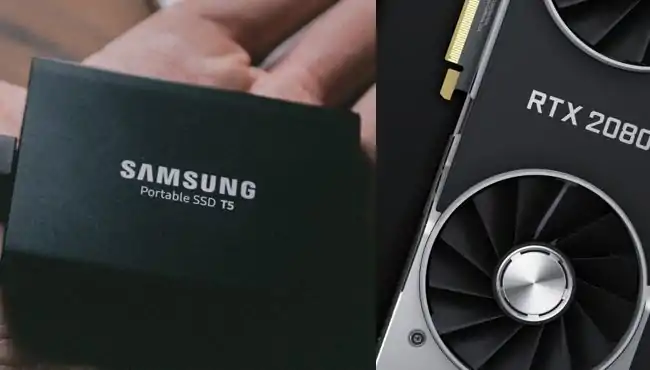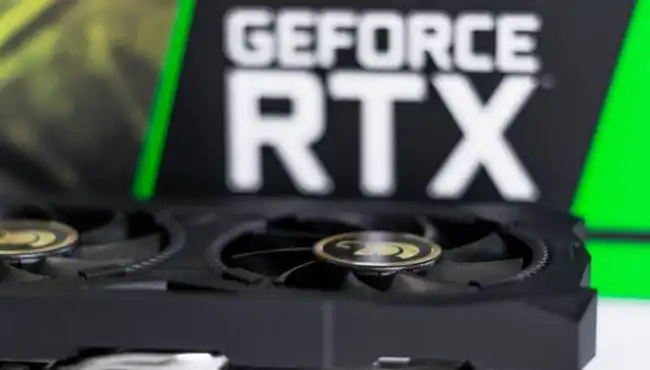SSD vs Graphics Card: Which is More Useful for a Laptop?
An in-depth analysis of two vital components that shape the performance of your laptop
In the fast-paced world of laptop technology, where advancements are made almost daily basis, it’s essential to stay updated with laptop radar about the components that truly make a difference in your laptop’s performance.
Get ready for the showdown between the solid-state drive (SSD) and the graphics card, two major components that can seriously level up your laptop experience.
Whether you’re a professional seeking seamless multitasking, a gamer hungry for lifelike visuals, or simply someone who values speed and efficiency, this article will shed light on the importance of these components and empower you to make smarter decisions when it comes to choosing the heart of your laptop.

SSD vs Graphics Card: Which is More Useful for a Laptop?
SSD
- Faster data storage and retrieval speed
- Improves overall laptop performance
- Ideal for normal daily tasks
- Suitable for laptops of all budgets
- Does not require a graphics card for improved performance
- Increases file input-output speed
Graphics Card
- Accelerates graphical performance
- Not directly related to storage drive speed
- Beneficial for gaming, 3D rendering, and heavy software usage
- Mostly found in mid to high-budget laptops
- Works best when combined with an SSD
- No impact on read/write speed of storage devices
This table summarizes the key aspects of both the SSD and graphics card in terms of their benefits and uses for a laptop. It aims to help novice individuals make an informed decision when choosing between these components for their laptop.
Laptop Radar present to you a comprehensive response to the highly debated and perplexing question – SSD or Graphics card: Which is more beneficial for a laptop? – aimed at novice individuals contemplating the purchase of a pristine laptop.
A solid-state drive and a graphics card – both serving as storage devices, possess distinct advantages and disadvantages that set them apart.
The low-budget laptops don’t have an SSD, come with the slow-speed HDD. The mid to high-budget laptops have an SSD, a graphics card, or both. But, The question is still not resolved.
Do I need a Laptop with SSD or Graphics or both?
Well, SSD and Graphics are two different technologies, the first one is for storing the data, the second one is for computing the graphical mathematics – In simple words, To accelerate the graphics performance.
So, the requirements of either or both of them are only to improve our computer’s performance on day-to-day tasks. For some people, the daily tasks involve the normal-uses, while for the same, It may be heavy-uses. So, let’s understand the normal and heavy-uses of the laptop in a better way.
Conclusion
What do I want to say in short?
For normal-uses, a solid-state drive must be the first choice since the file Input-Output speed depends on it where Graphics chip doesn’t require. For the heavy-uses like Gaming, 3D-rendering, video, and photo editing, buy a laptop that comes with both SSD and graphics chip.
The Normal Uses and Heavy Uses of the laptop
The normal-uses of the laptop involve dealing with MS Office, web browsing, videos and songs play, PDF rendering, web development, and anything that doesn’t consist of Gaming, 3D-rendering, or use of the heavy-software for programming, modeling, simulation, and many more.
The heavy uses of the laptop involve dealing with heavy tasks such as Gaming – The most popular, running the Programming software, 3D-rendering, modeling, simulation, and many more. In simple words, any activity that makes you feel that your machine is slow and needs an upgrade for personal use.
| Normal Uses of the Laptop | Heavy Uses of the Laptop |
|---|---|
| MS Office | Gaming |
| Web browsing | Running Programming Software |
| Videos and songs play | 3D-rendering |
| PDF rendering | Modeling |
| Web development | Simulation |
| Light software usage for programming | Any activity that requires high computational power and resources |
What is an SSD, and how it’s going to affect your computer’s performance?

The SSD is an abbreviated form of the solid-state drive. It’s a storage device and the most integral part of the upcoming laptops nowadays. The main task of an SSD device is to store the data into and retrieve the same from it.
It looks like a small piece of an almost half-centimeter thick plate. It’s shorter than the HDD in physical-size. It’s performance, looks, and prices are very different than HDD.
How is it going to affect the laptop’s performance?
As I have said, It’s a storage device, not a computer chip that makes decisions. It’s not going to make any decision, mathematical, or graphical computations – In simple words, It’s not going to decide that 2 + 2 = 4 not something-else. So, It has overall no-control or influence in making the computations better.
But, It will impact the speed of storing and retrieving the data into and from it. Let’s understand it in a batter way.
Why are the hard disk drives slow?
Consider the Windows OS here. In Windows, The C drive is the system drive, But, it’s not a different part of an HDD. Hence, whenever you open the software, The software files will be called from the HDD. So, due to the slow speed of a hard disk of your computer, The software will be late ready for you, because the HDD is consist of the moving parts, not static parts.
SSD involves a NAND-based flash memory. And It’s a non-volatile – means not going to erase when you turn it off. SSD has an embedded processor called a controller to handle the data inside it. The controller is a component that decides its read/write speed. The hard disk storage (HDD) has the moving parts that access the data inside it that makes it slow, more power consumptive, and can damage quickly due to its moving parts.
So, concluding this section, SSD is faster at reading and write speed, So it loads the files way faster than HDD, and its performance is independent of the Graphics chip of the laptop.
What is a Graphics chip, and how is it going to affect your computer’s performance?

A graphics chip is known as the GPU of the computer. It is placed on the laptop to accelerate the graphical performance.
How is it going to affect your computer’s performance?
For the normal-uses, It is not affecting the computer’s performance much. And, for the heavy uses, It’s affecting considerably. Now, the question that arises here is,
Does it accelerate the read/write speed of storage drive?
Well, the answer is No. The read/write speed of a particular storage device has no direct relationship with the laptop’s GPU or CPU. For hard disk drive, the read/write speed depends on how faster it rotates. And, for the solid-state drive, It depends on the embedded controller inside it.
Hence, If you have a laptop with a 4GB of Graphics card and 1TB or 500GB of HDD, then I would worry that for the normal-uses even for the heavy uses, the read/write speed will be low as GPU doesn’t influence the RW speed of the storage devices anyway.
If you have a laptop with Intel Core-i3, Normal graphics, and a minimum of 128GB of SSD, I would appreciate it since its performance on boot, loading of files will be better. And, In another case, consider a laptop with SSD + Graphics chip, What it can do? It can do way more effectively and efficiently than a normal-specs laptop.
The SSD read the files at 550 MB/s and writes at 520 MB/s approx whereas the HDD read the same at 70 MB/s and writes at just 50-55 MB/s, tested on the Dell Inspiron 3542 Laptop – Intel Core-i3, Intel Integrated Graphics.
In conclusion, both the solid-state drive (SSD) and the graphics card play vital roles in determining the performance of a laptop. The SSD significantly improves overall laptop performance, making it ideal for normal daily tasks and providing faster data storage and retrieval speed. On the other hand, the graphics card accelerates graphical performance and is beneficial for gaming, 3D rendering, and heavy software usage. While the SSD is essential for normal use, for heavy tasks such as gaming and intensive software usage, a laptop with both an SSD and a graphics card would be the optimal choice. Ultimately, the decision depends on the individual’s specific needs and budget.
If you gain a valuable solution from us then follow us and share this useful information with friends.
Laptop Radar is the only one who really tested the laptop first and then write laptop reviews so it definitely help you in the future also so join us now on all platforms to stay updated with the latest technology.